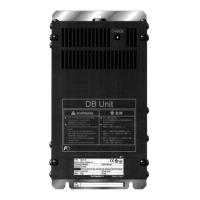Appendix C Effect on Insulation of General-purpose Motors Driven with 400 V
Class Inverters
Excerpt from technical material of
the Japan Electrical Manufacturers’ Association (JEMA) (March 1995)
Preface
When an inverter drives a motor, surge voltages generated by switching the inverter elements are superimposed
on the inverter output voltage and applied to the motor terminals. If the surge voltages are too high they may have
an effect on the motor insulation and some cases have resulted in damage.
For preventing such cases this document describes the generating mechanism of the surge voltages and
countermeasures against them.
Refer to “A.2 [ 1 ] Inverter noise” for details of the principle of inverter operation.
C.1 Generating mechanism of surge voltages
As the inverter rectifies a commercial power source voltage and smoothes into a DC voltage, the magnitude E of
the DC voltage becomes about
times that of the source voltage (about 620 V in case of an input voltage of 440
VAC). The peak value of the output voltage is usually close to this DC voltage value.
But, as there exists inductance (L) and stray capacitance (C) in wiring between the inverter and the motor, the
voltage variation due to switching the inverter elements causes a surge voltage originating in LC resonance and
results in the addition of high voltage to the motor terminals. (Refer to Figure C-1)
This voltage sometimes reaches up to about twice that of the inverter DC voltage (620 V × 2 = approximately 1,200
V) depending on a switching speed of the inverter elements and wiring conditions.
Figure C-1 Voltage Waveform of Individual Portions

